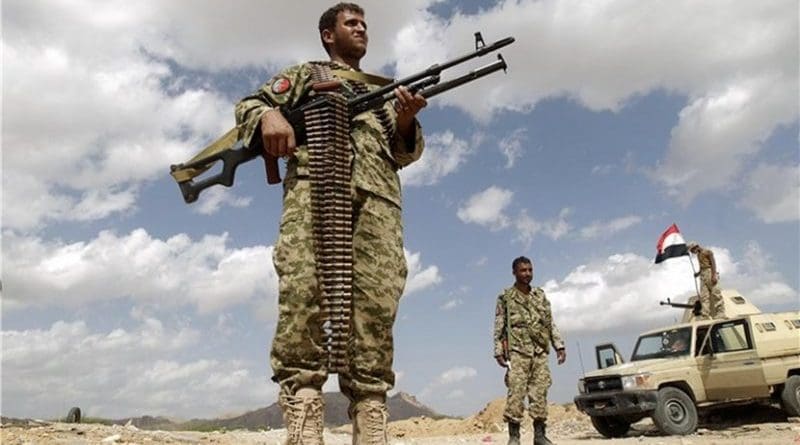The Disintegration Of Yemen – OpEd
Distressing as recent events have been in Yemen, a country torn apart by civil war that has led to a humanitarian disaster on a massive scale, the main outline of the conflict and the reasons behind it seemed, until quite recently, reasonably comprehensible. Now new developments have thoroughly complicated the issues. As a result, any progress made by UN special envoy Martin Griffiths towards some sort of agreement between the main parties has been largely negated.
This Yemen conflict started in the sadly misnamed “Arab spring” uprisings of 2011. Mass protests, a near-assassination of the then president, Ali Abdullah Saleh, and pressure from neighbouring petro-states forced Saleh to step down in favour of his vice-president, Abed Rabbo Mansour Hadi. The political instability was largely caused by attempts of the Iran-backed Houthi rebels to overthrow Saleh’s government.
The Houthis, although on the Shia side of the great Islamic Sunni-Shia divide, are in fact a minority group – Zaydi Shi’ites, taking their name from Zayd bin Ali, a descendant of the Prophet Muhammad’s cousin and son-in-law. With the collapse of the Ottoman Empire in 1918, a Zaydi monarchy took power in North Yemen, but it was overthrown by republicans, and in 1968 the Yemen Arab Republic was formed.
These events in North Yemen were echoed by a constitutional upheaval in the south. In 1967 South Yemen was established as a socialist state under the protection of the USSR. Relations between the two Yemens deteriorated, and in 1972 they took up arms against each other. A ceasefire, brokered by the Arab League, included the aspiration of unification in due course. It took a further 18 years of military and political in-fighting before that aspiration was realized, but in 1990 the Unified Republic of Yemen came into being. Ali Abdallah Saleh, who had been president of North Yemen since 1978, was proclaimed president of the newly united state.
Saleh himself became a victim of the so-called Arab Spring of 2011. He had given up the keys of office with a very bad grace, and was quite prepared to ally himself with his erstwhile enemies, the Houthis, in an attempt to manoeuvre his way back to power. The Yemeni military, including its air force, had remained largely loyal to Saleh. As a result, and supported with military hardware from Iran’s Revolutionary Guards, the Houthis overran large tracts of the country, including the capital city, Sana’a.
The subsequent turn of events seems depressingly familiar in the context of Yemen’s long history. Saudi Arabia, determined to prevent Iran from extending its footprint into the Arabian peninsula, intervened in March 2015 to beat back the Houthis. Saudi’s Crown Prince, Mohammed bin Salman (MBS), assembled a coalition of Arab states, obtained the diplomatic backing of the US, UK, Turkey and Pakistan, and launched a series of air strikes against the rebels.
The unconventional Saleh-Houthi partnership came to an abrupt end on December 2, 2017, when Saleh went on television to declare that he was splitting from the Houthis and was ready to enter into dialogue with the Saudi-led coalition. This volte-face was to end in tragedy. On December 4, Saleh’s house in Sana’a was besieged by Houthi fighters. Attempting to escape, he was killed.
Now the glue binding the two Yemens has come unstuck.
The first signs appeared as far back as 2007, when a south Yemen separatist movement was formed with the aim of re-establishing South Sudan as a sovereign state. Ten years later, in 2017, the movement set up the Southern Transitional Council (STC), backed by the United Arab Emirates.
Separatists from the STC are part of the military coalition fighting the Houthi rebels; so are the UAE, But suddenly, in the first week of August 2011, separatist forces seized government military bases, and began an assault on Aden. They had soon captured the city, the seat of the Saudi-backed Yemeni government, and thousands of people poured into the streets to support them, waving the old South Yemen flag.
It was an delicate situation. The UAE and Saudi Arabia had been firm allies in attempting to crush the Houthis, but they now found themselves on opposite sides of this separatist uprising. Meanwhile support for the separatists was growing. A petition signed by southern trades unions and other bodies called on the Saudi-led coalition to hand over administration of the south to the separatist STC. It urged STC chief Aidarus al-Zubaidi to declare independence, and appealed for international recognition for the breakaway state. This was backed on August 15 by a mass rally in support of the Southern forces and the Southern Transitional Council.
According to the UN the fighting between elements nominally within the same military alliance has killed at least 40 people and wounded 260 others. In one memorable phrase, it was turning into “a civil war within a civil war”.
Fortunately cooler counsels prevailed. Saudi-UAE discussions led to a ceasefire. By 16 August Southern separatists had vacated key public buildings in Aden, and the STC had welcomed Saudi Arabia’s call for dialogue.
But this episode introduces a new factor into an already complex situation. It is more than a minor spat between allies. In the long run, what sort of compromise can there be between the Saudi-backed president of a united Yemen fighting to maintain the integrity of his state, and the UAE-backed STC, dedicated to re-establishing an independent nation of South Yemen? Suddenly Yemen’s President Hadi is facing two enemies: the Houthis and the southern separatists.
Words issued on 14 August from UN envoy Martin Griffiths, currently watching events from the sidelines, sound true but ineffectual: “The conflict in Yemen can only be resolved through an inclusive political process.”
Yes indeed, but how long must Yemen’s agony persist?

